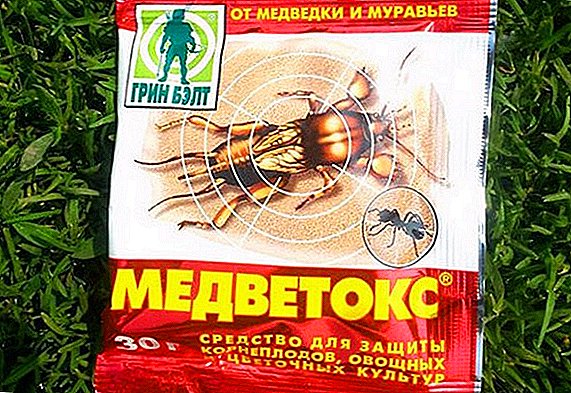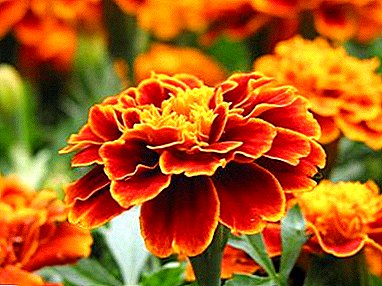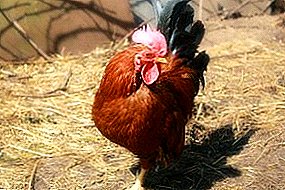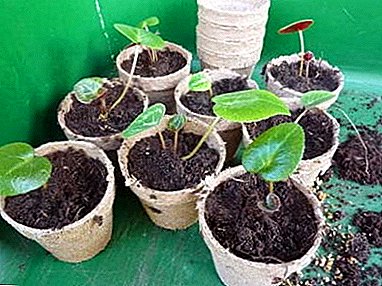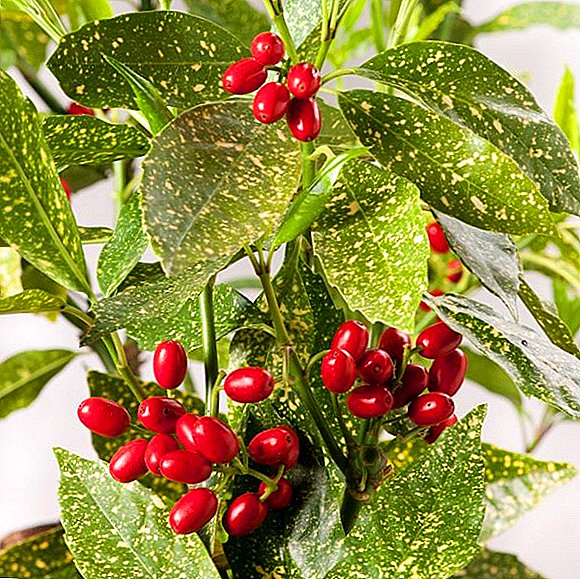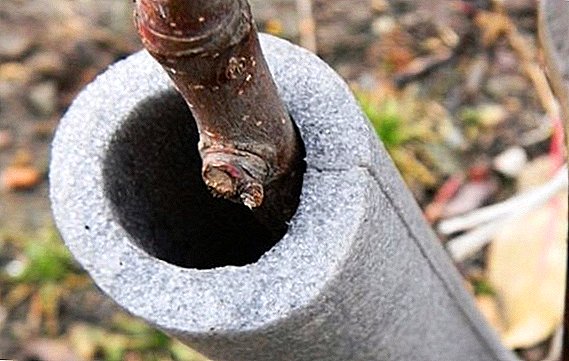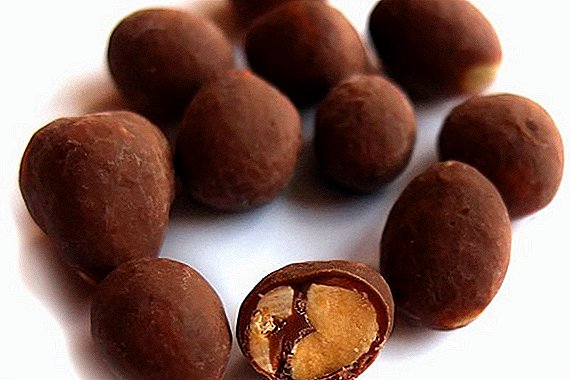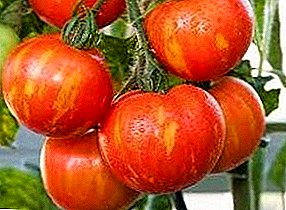 It is quite difficult to meet the recipe, where the greens were the main ingredient, but it gives the dishes a unique taste and aroma. And for the same reason, greens are grown even in the country, even on the balcony or windowsill of an apartment. This article focuses on perennial onions, in particular, on the peculiarities of its cultivation. We will also consider its types, so that you can choose exactly the sort that suits you both with its taste and its appearance.
It is quite difficult to meet the recipe, where the greens were the main ingredient, but it gives the dishes a unique taste and aroma. And for the same reason, greens are grown even in the country, even on the balcony or windowsill of an apartment. This article focuses on perennial onions, in particular, on the peculiarities of its cultivation. We will also consider its types, so that you can choose exactly the sort that suits you both with its taste and its appearance.
Perennial bows
Already from the name you can see the first characteristic of the plant - it is not necessary to plant it again each year to get a harvest. However, not only because of this, onions were fallen in love with gardeners and gardeners. Another important point is the period of ripening of the plant, because green feathers appear very early, and in March you can add fresh greens to your diet. In addition, the plant tolerates low temperatures and is resistant to diseases. You will not need to spend a lot of time onion either, since he never differed in his particular capriciousness.  Another feature of the plant is its appearance. Sometimes green onions can be seen even in flowerbeds and, you can be sure, it will become not only a useful food additive, but also perfectly cope with the task of decor. We recommend to pay attention to the varieties that bloom. Onion flowers attract bees, and insects pollinate all plants located near the greens, and this is an important stage for obtaining a good harvest, and not only onions.
Another feature of the plant is its appearance. Sometimes green onions can be seen even in flowerbeds and, you can be sure, it will become not only a useful food additive, but also perfectly cope with the task of decor. We recommend to pay attention to the varieties that bloom. Onion flowers attract bees, and insects pollinate all plants located near the greens, and this is an important stage for obtaining a good harvest, and not only onions.
Did you know? The image of onions was discovered by archeologists at the tomb of Tutankhamen, dating back to 1352 BC. e.
Popular species and varieties of the group
Undoubtedly, few of which the owner would have refused to grow in his many years of onion, hearing about its merits. In addition, in the green, even the earliest, contains many vitamins, in particular C, which the body lacks in the spring. Yes, and decorate your garden or window sill with a useful plant is always nice. We consider those varieties that are already successfully grown by experienced gardeners.
Check out the best varieties of decorative onions.In total, there are more than five hundred varieties, and all of them originally grew exclusively in the wild. At the moment, a perennial onion has found application in the household, and the choice depends solely on the preferences of the owners - both taste and aesthetic, because different varieties have a different appearance and, importantly, will easily take root in one area.
Chives
The name of this species also sometimes sounds like a chisel or skoroda, and it is often used to decorate a personal plot. This representative of onion perennials is perfect for growing on the garden or in the front garden, and on the balcony. Its distinguishing feature is flowers - similar to a small ball, about five centimeters in diameter, the color of which varies from pink to purple. They appear on the plant at the end of spring and do not disappear until autumn. 
Important! The abundance of flowering onions should not be paid much attention, because this fact does not affect the quality of yield.A chive produces onions exclusively in the form of green feathers, but the part that is directly underground is not suitable for cooking. Feathers are long, their length can reach 40 centimeters, the thickness is about 4-5 millimeters. Inside the grass is hollow, feathers are like thin tubes. It is best to eat chchnitt in the spring, since the onion changes its flavor and begins to sharpen with the onset of flowering. Moreover, in the summer period, feathers are tougher than in spring.
Batun
This view you probably saw on the garden - his or neighbor. Another name for the variety is Tatar or Dudchaty onions. Batun onion is valued primarily for its high content of beneficial substances, including vitamin C, magnesium, potassium, and riboflavin. It is impossible to call a fisty bow compact, because its bush grows quite widely, and the green itself bristles in different directions. Outwardly, the feather and really reminds tune, hollow inside.  Unlike Schnitt, the batun is quite large - the greens are drawn up to 60 centimeters in length, and the diameter of the feathers reaches 1.5-2 centimeters. Another feature is the arrows with which the onion multiplies. However, the appearance of these same arrows affect the taste of green. The flowering of this onion is categorically contraindicated, which is why we advise you to cut the flowers as soon as they become visible on the plant. With this procedure, you can add a green onion to food longer.
Unlike Schnitt, the batun is quite large - the greens are drawn up to 60 centimeters in length, and the diameter of the feathers reaches 1.5-2 centimeters. Another feature is the arrows with which the onion multiplies. However, the appearance of these same arrows affect the taste of green. The flowering of this onion is categorically contraindicated, which is why we advise you to cut the flowers as soon as they become visible on the plant. With this procedure, you can add a green onion to food longer.
Shallot
This type of perennial onion is most often grown for production. The reason for this is his ability to quickly grow green feathers in place of the cut. In addition to the greenery itself, you can eat and the underground part of the plant, the taste of which is especially appreciated by the chefs of French cuisine. As for the appearance of the onion, it resembles the bulb, with the only difference that in one bush of shallot grows more feathers.  Another distinctive feature is its incredible smell, which is completely absent sharpness characteristic of onions. As a decoration, this variety can not be used, and it's not just the appearance of the plant. Shallot is characterized by a certain capriciousness, which is why far from any plant can become its neighbor. Otherwise, the onion will simply lose all those tastes for which it is so highly valued.
Another distinctive feature is its incredible smell, which is completely absent sharpness characteristic of onions. As a decoration, this variety can not be used, and it's not just the appearance of the plant. Shallot is characterized by a certain capriciousness, which is why far from any plant can become its neighbor. Otherwise, the onion will simply lose all those tastes for which it is so highly valued.
Slizun
Gardeners often deprive this representative of attention, but in vain. Slizun, which is also called drooping onions, grows quickly, and appears on the tables in early May. It has a high iron content and amazing taste, combining both onion and garlic notes.  The taste characteristics of the bowman are variable. The mild taste at the beginning of the season by the end of August disappears. Greens gain rigidity, and the taste of onions allows the use of feathers as a substitute for garlic in conservation. Due to the large amount of iron in this class, slizun is recommended to use for people suffering from anemia, the people - anemia.
The taste characteristics of the bowman are variable. The mild taste at the beginning of the season by the end of August disappears. Greens gain rigidity, and the taste of onions allows the use of feathers as a substitute for garlic in conservation. Due to the large amount of iron in this class, slizun is recommended to use for people suffering from anemia, the people - anemia.
Did you know? The French exchanged their captive fellow countrymen with the Saracens, paying eight bulbs per person.This variety is suitable for decorating plots, although externally the bush resembles garlic. Feathers are flat, short and wide. Slizuna flower also has the appearance of a purple ball. The disadvantages of plants can be attributed to a low yield - the feathers are restored after cutting badly.
Multi-tiered
The main difference of this variety from all other perennials is the unusual appearance of the plant. Multiplying, this onion does not grow in breadth, spreading out on the ground, but upwards. The bulbs, which are usually an underground element, are clearly visible in this onion, because they literally hover in the air.  Due to this specificity, the multi-tiered bow is not used as an ornamental plant. Note that both onion feathers and onions themselves are eaten, from which feathers grow. Greens of a multi-tiered onion have a taste more pungent than other representatives of the species, even spicy.
Due to this specificity, the multi-tiered bow is not used as an ornamental plant. Note that both onion feathers and onions themselves are eaten, from which feathers grow. Greens of a multi-tiered onion have a taste more pungent than other representatives of the species, even spicy.
Fragrant
Outwardly, this variety is very similar to a drooping bow (slyzun). The same flat sheets, but growing over 50 centimeters. Taste characteristics of the species also have differences: fragrant onion has the same taste both at the beginning and at the end of the season. In addition, fragrant onions tend to have a high content of ascorbic acid and a low content of fiber.  The harvest from this onion can be harvested until November; the ability to grow new feathers at the cut point of the previous ones is good. But the onions of fragrant onion are not used as food - they are very small, besides they are covered with a special shell that helps the plant survive the extreme cold.
The harvest from this onion can be harvested until November; the ability to grow new feathers at the cut point of the previous ones is good. But the onions of fragrant onion are not used as food - they are very small, besides they are covered with a special shell that helps the plant survive the extreme cold.
General rules for planting perennial onion seeds
Perennial onions - an unpretentious plant, but some rules for the care and planting are still available. To get well-developed shrubs of greenery, choose for planting a soil that does not contain acid. It is advisable to fertilize the land before planting onions. In the place where you plan to plant greens, it is imperative to remove all the large weeds so that the water from the irrigation in sufficient quantities is delivered to the onion itself, and not to its harmful neighbors. Small weeds dobach do not harm.
Learn more about the various types of onions.
Site selection
In addition to fertilizers, there is another very important rule: a bush of greenery should not be under the direct influence of the sun's rays, as it can simply dry out. We recommend to choose a shady area, with the presence of nearby trees or shrubs that would cast a shadow on the green. However, such neighbors should not interfere with the ventilation of the place where the onions grow.  The presence of wind and air for the plant is also important. It is necessary to carefully prepare the soil for further cultivation of greens on it, because at this place the greens will grow over the next three to five years. Then it is better to find another site for the plants.
The presence of wind and air for the plant is also important. It is necessary to carefully prepare the soil for further cultivation of greens on it, because at this place the greens will grow over the next three to five years. Then it is better to find another site for the plants.
Landing time
Perennial onions are resistant to low temperatures, so it can be sown in early March. Another landing option is at the end of July - early August. Landmarks can be early vegetables, such as radishes or lettuce. As soon as they give fruit - boldly plant a perennial onion on your site.
Read also, what to fertilize onions, what to soak onions before planting, and when to dig it.Schnitt is best planted in early March, late August and November. If you want to get a harvest in the spring, then land in August. Seeding in November or March will yield in the summer.
Video: landing chives
Batun onion in terms of sowing is the same as shnitt.
Video: bat onion Shallots, as we remember, produce crops in the form of feathers and in the form of bulbs. If you grow this variety for greenery, then it is better to plant the plant as soon as the snow melts. To get tasty onions, plant onions in late autumn.
Video: planting shallots
For bowed onions (slizuna) it is better to choose a summer landing - in July. Then you will receive the harvest immediately after the soil moves away from the winter frosts.
Video: onion slizun
A multi-layered onion does not require a specific period when it would be possible to plan a landing. Since the onions are not underground, you can choose any time of year for planting. Green feathers this bow will give 30 days after landing in the ground.
Video: tiered bow It is better to plant sweet onion either in spring or in autumn. Summer sowing is possible, but undesirable, as this may affect the yield of the plant.
Video: Allium fragrant
How to prepare planting material
In order for the onion seeds to settle down in the soil as quickly as possible, the following procedure should be done: put the seeds in a container, cover them with slightly warm (but not hot) water and leave for 24 hours. During this time, you can change the water several times so that the grains are not in the cold. After all this, the onions must be thoroughly dried and only then proceed to the planting itself.
Onions are good neighbors - beets, cabbage, carrots, lettuce, tomatoes, potatoes and cucumbers. Bad neighbors for onions in the garden - peas, beans and sage.Of all the varieties we have listed, only shallots and multi-tiered produce a crop in the form of both green and onion. Multi-tiered breeds only with the help of vegetation, so for the further cultivation of this variety, you can collect grown neoplasms.
Important! The processes of the multi-tiered onions can dry out, so they need to be stored in a cool place, and planted in early autumn, otherwise the processes will be lost.A feature of shallots is the ability to re-harvest from the same onion. To do this, you need to get the onion immediately after the plant gives greens, cut off its half and re-place it in the ground - it is best to do this when growing shallots in a pot, because you need to sprinkle the onion with fresh earth to re-harvest.
Grow slizun, shallot, batun, chives, and fragrant and multi-tiered onions.In order for shallots to develop well in the soil, it must be placed half an hour in a solution of potassium permanganate before planting. This processing method is suitable for both growing onions and green feathers. Perennial onion can not immediately sow in the ground. So that on your garden just appeared greens, you can prepare the bushes for landing in open ground. To do this, plant seeds are sown either in a pot in the room, or in the soil previously treated with fertilizer.
 After you have planted the seeds, they need to be sprinkled on top of the soil. To do this, you will need a sieve or a sieve, and the soil itself must first be burst in order for it to be saturated with oxygen. Seedlings should be replanted in the late spring, two months after planting the seeds. Hence, it is necessary to sow seedlings in early March.
After you have planted the seeds, they need to be sprinkled on top of the soil. To do this, you will need a sieve or a sieve, and the soil itself must first be burst in order for it to be saturated with oxygen. Seedlings should be replanted in the late spring, two months after planting the seeds. Hence, it is necessary to sow seedlings in early March.Landing pattern
It is best to plant perennial onions of any sort into the ground using an ordinary scheme, leaving 20 centimeters between the plants in a row and 70 centimeters between the rows themselves. Then the plant will have a place for development, because it grows well. 
How to propagate onions by dividing rhizomes
This method of plant reproduction is also called vegetative. You can resort to it, regardless of what kind of green onion you have chosen for planting on your site - chickens, batun, shallot, slyzun, fragrant or multi-tiered. They all multiply by dividing the bushes. All varieties, excluding multi-tiered onions, multiply even with the help of seeds. In a multi-tiered variety, seeds are absent; therefore, the plant can only be propagated vegetatively.
Did you know? The world champion in eating onions per capita is Libya, where, according to the UN, the average citizen eats more than 33 kg of onions per year.The principle of separation of rhizomes is simple: an adult bush, which is already more than three years old, should be divided into independent parts in March-April or the end of August. By this age, all plants grow, so the procedure is not difficult. Each part must subsequently be planted as a separate bush.
 It is important to pay attention to the part you choose: the root must be well developed, otherwise the onion will simply not take root or will be weak. If part of the bush is well developed, it is placed in the ground to a depth of 10 centimeters, and the distance between the plants should be from 20 to 30 centimeters. Weakly developed branches are placed at a depth of no more than 6 centimeters, leaving about 10-15 centimeters between different bushes.
It is important to pay attention to the part you choose: the root must be well developed, otherwise the onion will simply not take root or will be weak. If part of the bush is well developed, it is placed in the ground to a depth of 10 centimeters, and the distance between the plants should be from 20 to 30 centimeters. Weakly developed branches are placed at a depth of no more than 6 centimeters, leaving about 10-15 centimeters between different bushes.Features and rules of care
Despite the fact that perennial onions are unpretentious, there are basic rules for caring for the plant. It depends on him the development of bulbs and harvest. We will share with you recommendations regarding the cultivation of green onions.
How to water
Perennial varieties love moisture, so they need to be watered abundantly. As for the frequency of irrigation, it is necessary to produce it after each cutting of feathers. It is important not to flood the bushes of perennial onions, since an excess of moisture in the soil will lead to root rot.
Probably everyone knows about the benefits of eating green onions, which can be grown even on the windowsill. In this regard, the hostess came up with many ways to prepare it.
When and how to feed
Feeding the bulbs is also an important moment of plant care. The additive in the form of phosphorus and potassium is carried out in early autumn. Thanks to these substances, the plant will survive the winter months more easily. After harvesting, we recommend paying attention to nitrogen fertilizers. Also, after collecting greens, you can add compost, humus, potassium salt or superphosphate to the soil. 
Important! In order for the perennial onion all five years to please you with a good harvest, feed the plants after each harvest.
Soil care
Perennial varieties do not tolerate the neighborhood with large weeds, therefore, weeding a bed with greens will need especially badly. Small pests do no harm, however, weeding and loosening the soil should be periodically, several times a season.
Fight against diseases and pests
Greens are grown for human consumption, so it is important to monitor the health of the plant. Only a healthy bush can give a good harvest and benefit your body. The best way to combat diseases of the bush greenery - is timely prevention. Then the disease will not be able to hit the plant, and you will be left with a good harvest.  Prevention measures include the following:
Prevention measures include the following:
- Planting plants strictly in the specified period. Thanks to this, the onion will get used to the ground faster, it will be better developed. After all, perennial varieties are attractive precisely because of their resistance to disease.
- Seeds or seedlings must be processed before planting in the soil.
- In the period when the greens begin to grow, a solution of Bordeaux liquid can be applied. They need to sprinkle the plants.
- Для одноразовой обработки лука можно обработать кустики хлорокисью меди (раствор 0,5%) или воспользоваться раствором "Цинеба" (0,04%).
- From biological preparations one can treat perennial onions with "Alirin", "Glyocladin", "Fitosporin-M" or "Gamar".
- During the growing season, it is necessary to check the condition of the onions and immediately rid the bed of infected plants so that the disease does not spread.
Important! After you treat the plants with a special preparation, do not rush to eat greens. It is necessary to wait two days, and only after that the onions will again become fit for human consumption. From preparations that are organic, we recommend using "Fitoderm" or "Agrovertin".
 The drug Glyocladin If you still found on the onion of one of these pests, use only biological means to get rid of them. Chemicals can eliminate uninvited guests, but eating greens after such treatment is unsafe for your health.
The drug Glyocladin If you still found on the onion of one of these pests, use only biological means to get rid of them. Chemicals can eliminate uninvited guests, but eating greens after such treatment is unsafe for your health.Learn how to grow onions, and what is rokambol, Indian, and viper onions.
When and how to harvest
Most perennial onions give more than one crop per season. The same shallots are grown for sale, because new feathers grow quickly on the site of the cut feathers. Harvest early varieties can be in the middle of spring, we recommend that you focus not on the month, but on the length of feathers. When the greens stretch to a length of 25-30 centimeters, you can safely cut the feathers of fresh green onions.
Is it possible to grow perennial onions in a greenhouse?
A greenhouse or a pot on the windowsill in the house may well become a place for growing perennial onions. Most often, these methods of growing plants are used in the cold season. Then the harvest can be seen in the form of green feathers all year round.  If you correctly approach the choice of perennial onion species, you can provide yourself with vitamins from early spring to late autumn, using both greens and turnip for food. Many types of perennial onions are unpretentious in care, resistant to diseases, give a consistently high yield. A regular use of this vegetable will positively affect the state of your immunity.
If you correctly approach the choice of perennial onion species, you can provide yourself with vitamins from early spring to late autumn, using both greens and turnip for food. Many types of perennial onions are unpretentious in care, resistant to diseases, give a consistently high yield. A regular use of this vegetable will positively affect the state of your immunity.
Reviews from the network




